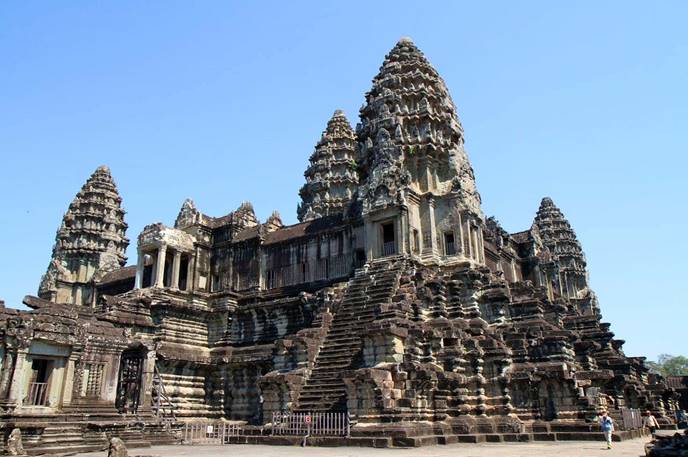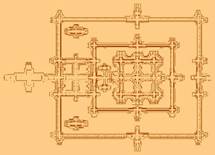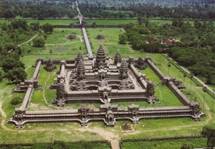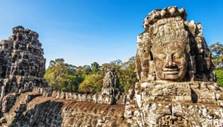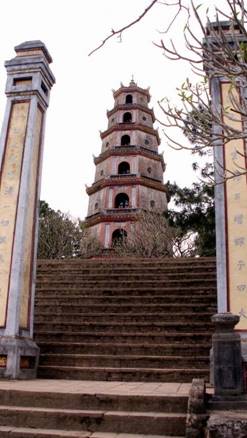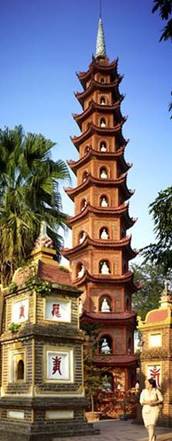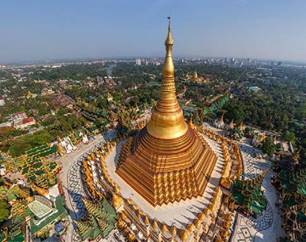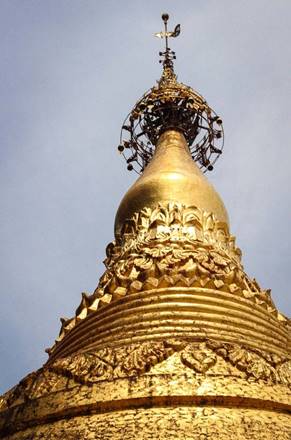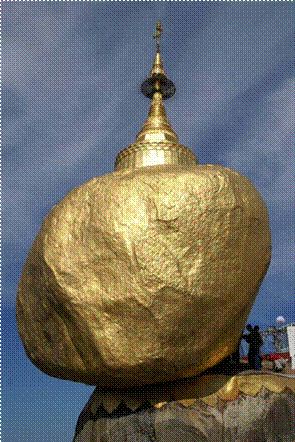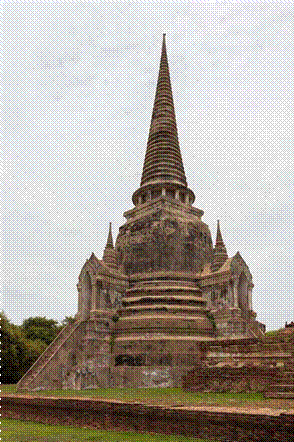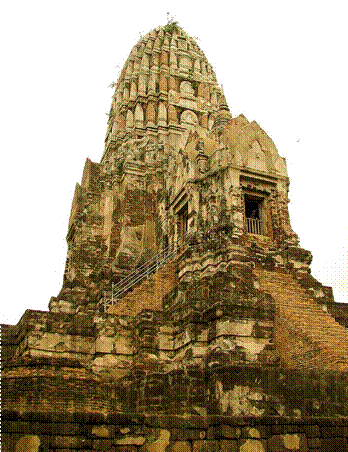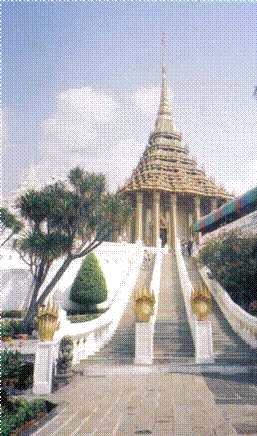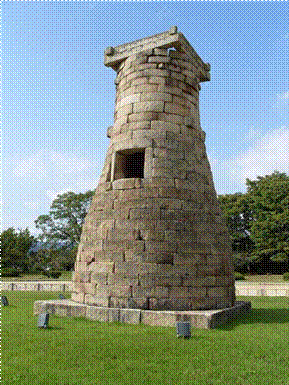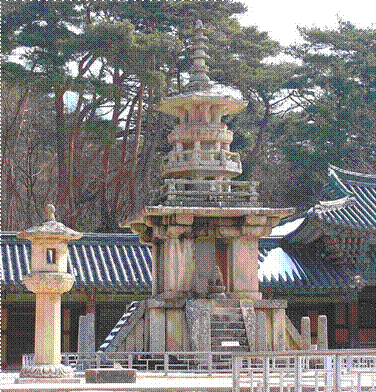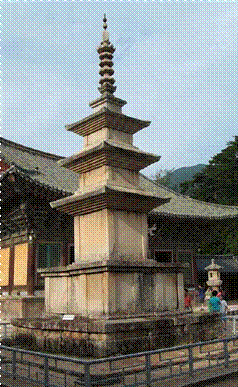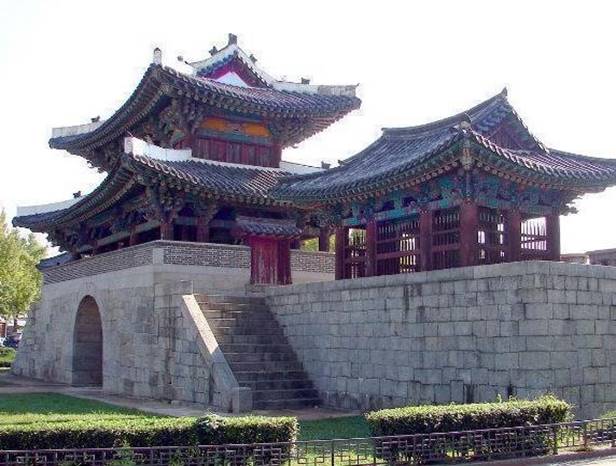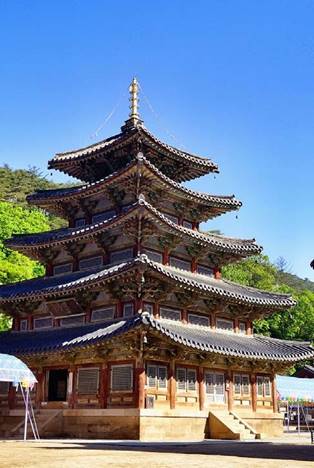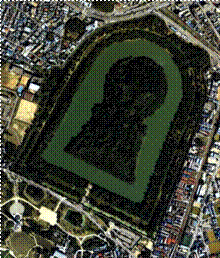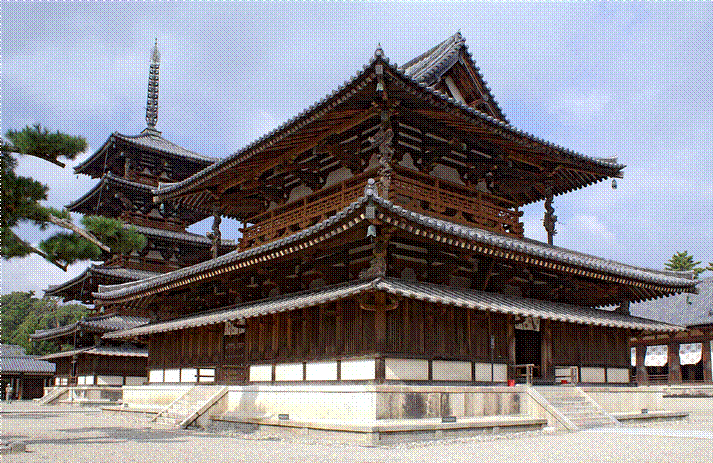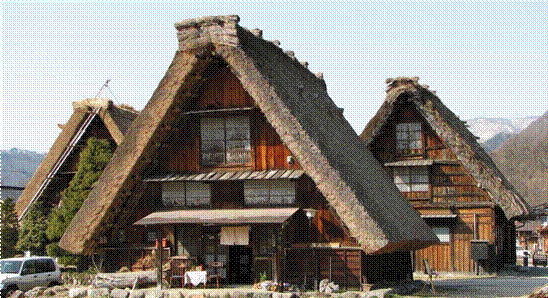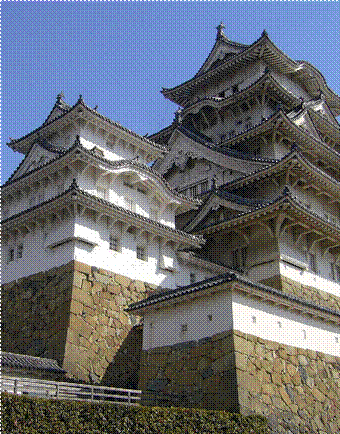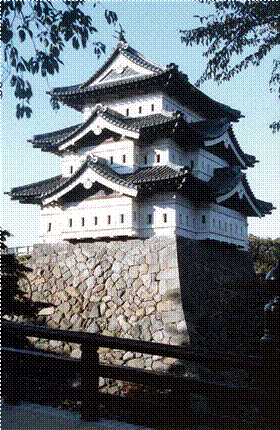THE MEDIEVAL SOUTHEASTERN AND EASTERN ASIAN ARCHITECTURE: The twelfth Album / THE HISTORY OF ARCHITECTURE FROM PREHISTORIC TO MODERN TIMES: Albums of characteristic examples for the Educational course / by Dr. Konstantin I.Samoilov. – Almaty, 2017. – 18 p.
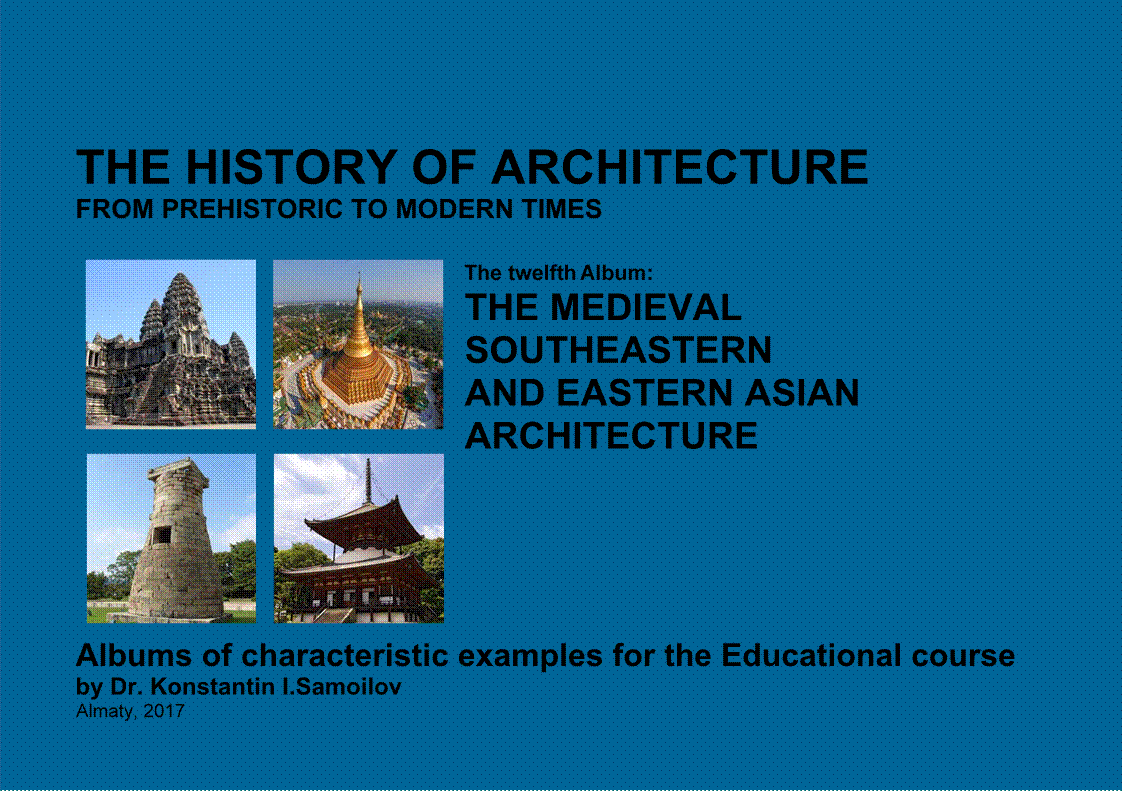
This series of albums generated for information purposes of the Educational course "The General History of Architecture": 2 credits / 30 hours of lectures.
Until the mid-19th century, examples are grouped by region. In this period, the phenomenon of a single world architectural process begins to manifest itself. Since the last third of the 19th century, examples have been grouped by decades.
Thirty albums illustrate the following topics:
- the 1st Album: EDUCATIONAL AND SCIENTIFIC-THEORETICAL SOURCES
- the 2nd Album: THE PREHISTORIC ERA’s ARCHITECTURE
- the 3rd Album: THE ANCIENT EGYPTIAN ARCHITECTURE
- the 4th Album: THE ANCIENT MESOPOTAMIAN ARCHITECTURE
- the 5th Album: THE ANCIENT GREEK ARCHITECTURE
- the 6th Album: THE ANCIENT ROMAN ARCHITECTURE
- the 7th Album: THE MEDIEVAL EUROPEAN ARCHITECTURE
- the 8th Album: THE EUROPEAN RENAISSANCE'S ARCHITECTURE
- the 9th Album: THE MEDIEVAL MAGHREB'S, THE NEAR EASTERN AND THE CAUCASUS'S ARCHITECTURE
- the 10th Album: THE MEDIEVAL CENTRAL ASIAN ARCHITECTURE
- the 11th Album: THE ANCIENT AND MEDIEVAL CHINESE ARCHITECTURE
- the 12th Album: THE MEDIEVAL SOUTHEASTERN AND EASTERN ASIAN ARCHITECTURE
- the 13th Album: THE MEDIEVAL CENTRAL AMERICAN ARCHITECTURE
- the 14th Album: THE EASTERN EUROPE MIDDLE AGES AND NEW TIMES ARCHITECTURE
- the 15th Album: THE WESTERN EUROPEAN AND THE NORTH AMERICAN NEW TIMES ARCHITECTURE
- the 16th Album: THE WORLD’s ARCHITECTURE OF THE 1870’s
- the 17th Album: THE WORLD’s ARCHITECTURE OF THE 1880’s
- the 18th Album: THE WORLD’s ARCHITECTURE OF THE 1890’s
- the 19th Album: THE WORLD’s ARCHITECTURE OF THE 1900’s
- the 20th Album: THE WORLD’s ARCHITECTURE OF THE 1910’s - the 21st Album: THE WORLD’s ARCHITECTURE OF THE 1920’s
- the 22nd Album: THE WORLD’s ARCHITECTURE OF THE 1930’s
- the 23rd Album: THE WORLD’s ARCHITECTURE OF THE 1940’s
- the 24th Album: THE WORLD’s ARCHITECTURE OF THE 1950’s
- the 25th Album: THE WORLD’s ARCHITECTURE OF THE 1960’s
- the 26th Album: THE WORLD’s ARCHITECTURE OF THE 1970’s
- the 27th Album: THE WORLD’s ARCHITECTURE OF THE 1980’s
- the 28th Album: THE WORLD’s ARCHITECTURE OF THE 1990’s
- the 29th Album: THE WORLD’s ARCHITECTURE OF THE 2000’s
- the 30th Album: THE WORLD’s ARCHITECTURE OF THE 2010’s
Examples are distributed in chronological order of the construct completion.
Images sources are indicated directly near with illustrations on each page.
Architects and companies listed on the basis of aggregate data from different sources (for some objects from various sources indicate different authors). About some buildings listed authors in the available sources has not yet been found.
The Author expresses his gratitude to Internet resources – https://www.google.com ; https://www.wikipedia.org – which to provide the ability to collect an information.
The 12th Album’s front cover:
The Angkor Wat / "Capital Temple", Angkor, Siem Reap Province, Cambodia, 12th century -
https://lonelyplanetwp.imgix.net/2016/01/angkor-wat-towers.jpg?fit=min&q=40&sharp=10&vib=20&w=1470
The Shwedagon Pagoda (stupa) / Great Dagon Pagoda / Golden Pagoda, Yangon, Myanmar, 1372 (Arch. Okkalapa of Burma) - https://www.airpano.com/files/Shwedagon-Pagoda-Myanmar/image1a.jpg http://www.globeholidays.net/Asia/Myanmar/Media/Yangon_Pagoda_Shwedagon.jpg the Cheomseongdae - an astronomical observatory, Gyeongju, 647 – https://upload.wikimedia.org/wikipedia/commons/thumb/f/fa/Korea-Gyeongju-Cheomseongdae-02.jpg/800px-Korea-GyeongjuCheomseongdae-02.jpg
the Pagoda of Negoro-ji in Iwade, Wakayama, 1547 –
https://upload.wikimedia.org/wikipedia/commons/thumb/6/6d/Negoroji03s3200.jpg/800px-Negoroji03s3200.jpg
Purpose of the 12th Lecture:
To study the basic features of the South Eastern and Eastern Asian Medieval architecture.
Tasks of the 12th Lecture:
- To consider characteristic examples of specifically organized spaces and buildings;
- To accentuate the features of construction depending on the availability of building materials; - To emphasize the difference between cult and dwelling buildings.
Tasks for the self-research work:
1. Study the change in the nomenclature of buildings and structures during the evolution of the South
Eastern and Eastern Asian Medieval architecture
2. Analyze geometric parameters of main types of structures and buildings.
Questions for the self-preparation:
1. Accentuate the features of the Burmese and the Vietnamese architecture
2. Accentuate the features of the Thai architecture
Themes of abstracts (16 pages, 40 000 characters, A4 format):
1. The evolution of the Korean Architecture
2. The evolution of the Japanese Architecture
3. The evolution of the Cambodian Architecture
Examples for the 12th Lecture:
12.1 The Medieval South East and East Azia: the Map
12.2 The Angkor Wat / "Capital Temple", Angkor, Siem Reap Province, Cambodia, 12th century 12.3 The Vietnam’s architecture: the Po Nagar / Cham temple tower, Nha Trang, 781; the Pagoda of the Celestial Lady / Chùa Thiên Mụ / Linh Mụ Pagoda, Huế, 1601; the Trấn Quốc Pagoda / Chùa Trấn Quốc, Hanoi, VI c. - 1815
12.4 The Shwedagon Pagoda (stupa) / Great Dagon Pagoda / Golden Pagoda, Yangon, Myanmar,
1372 (Arch. Okkalapa of Burma); the Kyaiktiyo Pagoda / Golden Rock, Mon State, Burma / Myanmar, 5th century BC / 16th century AD
12.5 The Thailand’s architecture: the Chedi, Wat Phra Si Sanphet, Ayutthaya, 15th c.; the Central prang, Wat Ratchaburana, Ayutthaya, 1424; Wat Phra Phutthabat, Saraburi, 17th c.
12.6 The Korean architecture: the Cheomseongdae - an astronomical observatory, Gyeongju, 647; the
Dabotap pagoda, Bulguksa temple, 751; the Seokgatap (Sakyamuni Pagoda) / Sakyamuni Yeoraesangjuseolbeop Tap / Shadowless Pagoda / Bulguksa Samcheung Seoktap ("three-storied stone pagoda of Bulguksa"), Bulguksa temple, 751
12.7 The Korean architecture: the Pungnammun Gate, Jeonju city, 1768; the Pagoda, Beopju temple, Songnisan National Park, 1624
12.8 The Japanese architecture: the Daisenryō Kofun, Furuichi Kofun Group, Osaka, 5th c.; the Kon-
dō and pagoda at Hōryū-ji, Ikaruga, Nara, 7th c.
12.9 The Japanese architecture: Pagoda of Ichijō-ji, Kasai, Hyōgo, 1171; Phoenix Hall at Byōdō-in, Uji,
Kyoto Built in 1053; Typical minka-style gasshō-zukuri farmhouse
12.10 The Japanese architecture: the Pagoda of Negoro-ji in Iwade, Wakayama, 1547; the Himeji
Castle in Himeji, Hyōgo, 1618; the Tenshu of Hirosaki Castle in Hirosaki, Aomori, 1611
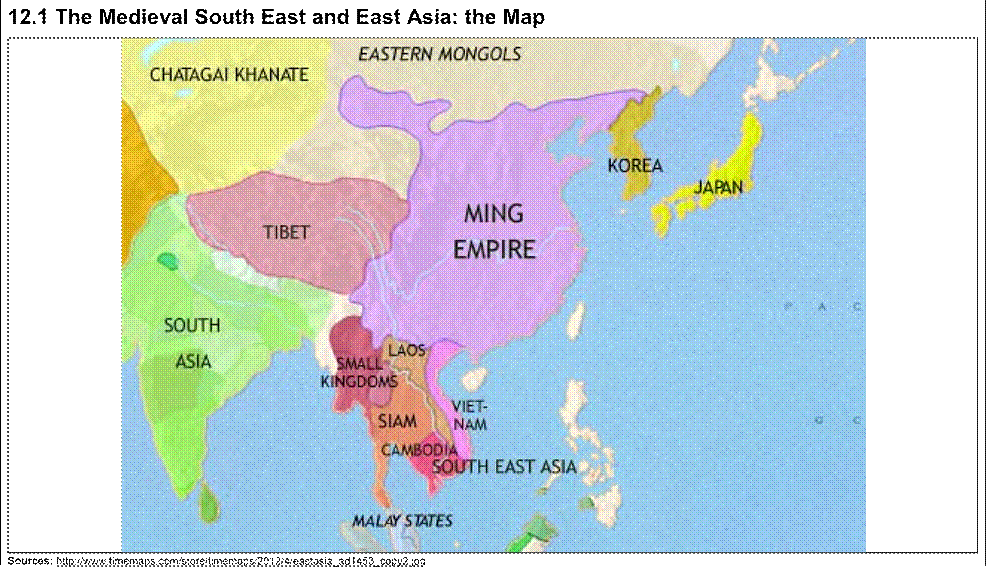
12.2 The Angkor Wat / "Capital Temple", Angkor, Siem Reap Province, Cambodia, 12th century
![]()
![]()
|
|
|
Sources: https://lonelyplanetwp.imgix.net/2016/01/angkor-wat-towers.jpg?fit=min&q=40&sharp=10&vib=20&w=1470 ; https://upload.wikimedia.org/wikipedia/commons/a/ad/Angkor_Wat_M3.png ; http://www.mysteryofindia.com/wp-content/uploads/2015/01/Angkor-Wat.jpg ; https://cdn.getyourguide.com/niwziy2l9cvz/3EjSdUOeysYgGWg8UE2kEG/aa8d3b410d33862044f8e27fbaa9fcad/Cambodiaangkor-wat-1500x850__2_.jpg
![]()
![]() 12.3
The Vietnam’s architecture: the Po Nagar / Cham temple tower, Nha Trang, 781;
the Pagoda of the Celestial Lady / Chùa Thiên Mụ / Linh Mụ
Pagoda, Huế, 1601; the Trấn Quốc Pagoda / Chùa Trấn
Quốc, Hanoi, VI c. - 1815
12.3
The Vietnam’s architecture: the Po Nagar / Cham temple tower, Nha Trang, 781;
the Pagoda of the Celestial Lady / Chùa Thiên Mụ / Linh Mụ
Pagoda, Huế, 1601; the Trấn Quốc Pagoda / Chùa Trấn
Quốc, Hanoi, VI c. - 1815
|
|
|
|
Sources: https://upload.wikimedia.org/wikipedia/commons/thumb/0/03/Champa_Po_Nagar_Nha_Trang.jpg/1280px-Champa_Po_Nagar_Nha_Trang.jpg ; http://esphoto980x880noname.mnstatic.com/23a3ce5a5754c51e636f482d4b274347 ; http://media.tinmoi.vn/2011/08/19/5_21_1313733650_2_hanoi-pagoda.jpg
![]()
![]() 12.4
The Shwedagon Pagoda (stupa) / Great Dagon Pagoda / Golden Pagoda, Yangon,
Myanmar, 1372 (Arch. Okkalapa of Burma); the Kyaiktiyo Pagoda / Golden Rock,
Mon State, Burma / Myanmar, 5th century BC / 16th century
AD
12.4
The Shwedagon Pagoda (stupa) / Great Dagon Pagoda / Golden Pagoda, Yangon,
Myanmar, 1372 (Arch. Okkalapa of Burma); the Kyaiktiyo Pagoda / Golden Rock,
Mon State, Burma / Myanmar, 5th century BC / 16th century
AD
|
|
|
|
Sources: https://www.airpano.com/files/Shwedagon-Pagoda-Myanmar/image1a.jpg ; http://www.globeholidays.net/Asia/Myanmar/Media/Yangon_Pagoda_Shwedagon.jpg .
http://www.paperplanesblog.com/wp-content/uploads/2015/06/IMG_1963.jpg ; http://paranormal-news.ru/_nw/119/s26516996.jpg
![]()
![]() 12.5
The Thailand’s architecture: the Chedi, Wat Phra Si Sanphet, Ayutthaya, 15th
c.; the Central prang, Wat Ratchaburana, Ayutthaya, 1424; Wat Phra Phutthabat,
Saraburi, 17th c.
12.5
The Thailand’s architecture: the Chedi, Wat Phra Si Sanphet, Ayutthaya, 15th
c.; the Central prang, Wat Ratchaburana, Ayutthaya, 1424; Wat Phra Phutthabat,
Saraburi, 17th c.
|
|
|
|
Sources: https://upload.wikimedia.org/wikipedia/commons/thumb/b/b1/Templo_Phra_Si_Sanphet%2C_Ayutthaya%2C_Tailandia%2C_2013-08-23%2C_DD_01.jpg/800pxTemplo_Phra_Si_Sanphet%2C_Ayutthaya%2C_Tailandia%2C_2013-08-23%2C_DD_01.jpg ; https://upload.wikimedia.org/wikipedia/commons/thumb/b/b6/Wat_Ratchaburana_Ayutthaya_Thailand_05.jpg/800px-Wat_Ratchaburana_Ayutthaya_Thailand_05.jpg ; https://upload.wikimedia.org/wikipedia/commons/7/74/Wat_Phra_Phuttha_Baht.jpg
12.6 The Korean architecture: the Cheomseongdae - an astronomical observatory, Gyeongju, 647; the Dabotap pagoda, Bulguksa temple, 751; the Seokgatap (Sakyamuni Pagoda) /
Sakyamuni Yeoraesangjuseolbeop Tap / Shadowless Pagoda / Bulguksa Samcheung
![]()
![]() Seoktap
("three-storied stone pagoda of Bulguksa"), Bulguksa temple, 751
Seoktap
("three-storied stone pagoda of Bulguksa"), Bulguksa temple, 751
|
|
|
|
Sources: https://upload.wikimedia.org/wikipedia/commons/thumb/f/fa/Korea-Gyeongju-Cheomseongdae-02.jpg/800px-Korea-Gyeongju-Cheomseongdae-02.jpg ; https://upload.wikimedia.org/wikipedia/commons/thumb/e/ed/184_%EB%B6%88%EA%B5%AD%EC%82%AC_%EB%8B%A4%EB%B3%B4%ED%83%91.jpg/1280px-
184_%EB%B6%88%EA%B5%AD%EC%82%AC_%EB%8B%A4%EB%B3%B4%ED%83%91.jpg ; https://upload.wikimedia.org/wikipedia/commons/thumb/4/4c/Seokgatap_bulguksa.jpg/800pxSeokgatap_bulguksa.jpg
![]()
![]() 12.7
The Korean architecture: the Pungnammun Gate, Jeonju city,
1768; the Pagoda, Beopju temple, Songnisan National Park,
1624
12.7
The Korean architecture: the Pungnammun Gate, Jeonju city,
1768; the Pagoda, Beopju temple, Songnisan National Park,
1624
|
|
|
Sources: http://photos.wikimapia.org/p/00/01/53/23/84_big.jpg ; https://upload.wikimedia.org/wikipedia/commons/thumb/7/77/Beopjusa_Temple_Stay_in_Korea._Palsangjeon_%28fivestory_wooden_pagoda%29.jpg/800px-Beopjusa_Temple_Stay_in_Korea._Palsangjeon_%28five-story_wooden_pagoda%29.jpg
12.8 The Japanese architecture: the Daisenryō Kofun, Furuichi Kofun Group, Osaka, 5th c.; the
![]()
![]() Kon-dō
and pagoda at Hōryū-ji, Ikaruga, Nara, 7th
c.
Kon-dō
and pagoda at Hōryū-ji, Ikaruga, Nara, 7th
c.
|
|
|
Sources: https://upload.wikimedia.org/wikipedia/commons/3/3f/NintokuTomb.jpg ; https://upload.wikimedia.org/wikipedia/commons/d/d9/Furuichi_kofun_group.jpg ; https://upload.wikimedia.org/wikipedia/commons/thumb/1/17/Horyu-ji11s3200.jpg/1280px-Horyu-ji11s3200.jpg
![]()
![]() 12.9
The Japanese architecture: Pagoda of Ichijō-ji, Kasai, Hyōgo, 1171;
Phoenix Hall at Byōdōin, Uji, Kyoto Built in 1053; Typical
minka-style gasshō-zukuri farmhouse
12.9
The Japanese architecture: Pagoda of Ichijō-ji, Kasai, Hyōgo, 1171;
Phoenix Hall at Byōdōin, Uji, Kyoto Built in 1053; Typical
minka-style gasshō-zukuri farmhouse
|
|
|
Sources: https://upload.wikimedia.org/wikipedia/commons/thumb/a/a7/Ichijoji_Kasai13bs4272.jpg/800px-Ichijoji_Kasai13bs4272.jpg ; https://upload.wikimedia.org/wikipedia/commons/thumb/c/ca/Byodoin_Uji01pbs2640.jpg/1280px-Byodo-in_Uji01pbs2640.jpg ; https://upload.wikimedia.org/wikipedia/commons/thumb/8/87/Gassho-zukuri_farmhouse-01.jpg/1920px-Gassho-zukuri_farmhouse-01.jpg
![]()
![]() 12.10
The Japanese architecture: the Pagoda of Negoro-ji in Iwade, Wakayama, 1547;
the Himeji Castle in Himeji, Hyōgo, 1618; the Tenshu of Hirosaki Castle
in Hirosaki, Aomori, 1611
12.10
The Japanese architecture: the Pagoda of Negoro-ji in Iwade, Wakayama, 1547;
the Himeji Castle in Himeji, Hyōgo, 1618; the Tenshu of Hirosaki Castle
in Hirosaki, Aomori, 1611
|
|
|
|
Sources: https://upload.wikimedia.org/wikipedia/commons/thumb/6/6d/Negoroji03s3200.jpg/800px-Negoroji03s3200.jpg ; https://upload.wikimedia.org/wikipedia/commons/thumb/a/ac/Himeji_Castle_01s2048.jpg/1280px-Himeji_Castle_01s2048.jpg ; https://upload.wikimedia.org/wikipedia/commons/thumb/7/7c/Hirosakijo.jpg/800px-Hirosakijo.jpg
Recommended educational and scientific-theoretical sources:
1. Angkor Wat / From Wikipedia, the free encyclopedia/ - URL: https://en.wikipedia.org/wiki/Angkor_Wat 2. Shwedagon Pagoda / From Wikipedia, the free encyclopedia. - URL:
https://en.wikipedia.org/wiki/Shwedagon_Pagoda
3. Kyaiktiyo Pagoda / From Wikipedia, the free encyclopedia. - URL: https://en.wikipedia.org/wiki/Kyaiktiyo_Pagoda 4. Wat Ratchaburana, Ayutthaya / From Wikipedia, the free encyclopedia. - URL: https://en.wikipedia.org/wiki/Wat_Ratchaburana,_Ayutthaya
5. Wat Phra Si Sanphet / From Wikipedia, the free encyclopedia. - URL: https://en.wikipedia.org/wiki/Wat_Phra_Si_Sanphet
6. Wat Phra Phutthabat / From Wikipedia, the free encyclopedia. - URL:
https://en.wikipedia.org/wiki/Wat_Phra_Phutthabat
7. Po Nagar / From Wikipedia, the free encyclopedia. - URL: https://en.wikipedia.org/wiki/Po_Nagar 8. Pagoda of the Celestial Lady / From Wikipedia, the free encyclopedia. - URL:
https://en.wikipedia.org/wiki/Pagoda_of_the_Celestial_Lady
9. Trấn Quốc Pagoda / From Wikipedia, the free encyclopedia. - URL:
https://en.wikipedia.org/wiki/Tran_Quoc_Pagoda
10. Korean architecture / From Wikipedia, the free encyclopedia. - URL:
https://en.wikipedia.org/wiki/Korean_architecture
11. Cheomseongdae / From Wikipedia, the free encyclopedia. - URL: https://en.wikipedia.org/wiki/Cheomseongdae
12. Dabotap / From Wikipedia, the free encyclopedia. - URL: https://en.wikipedia.org/wiki/Dabotap 13. Seokgatap / From Wikipedia, the free encyclopedia. - URL: https://en.wikipedia.org/wiki/Seokgatap 14. Japanese architecture / From Wikipedia, the free encyclopedia. - URL:
https://en.wikipedia.org/wiki/Japanese_architecture
15. Kofun / From Wikipedia, the free encyclopedia. - URL: https://en.wikipedia.org/wiki/Kofun
THE HISTORY OF ARCHITECTURE FROM PREHISTORIC TO MODERN TIMES
Albums of characteristic examples for the Educational course / by Dr.Konstantin I.Samoilov, Almaty, 2017


© ООО «Знанио»
С вами с 2009 года.
![]()


